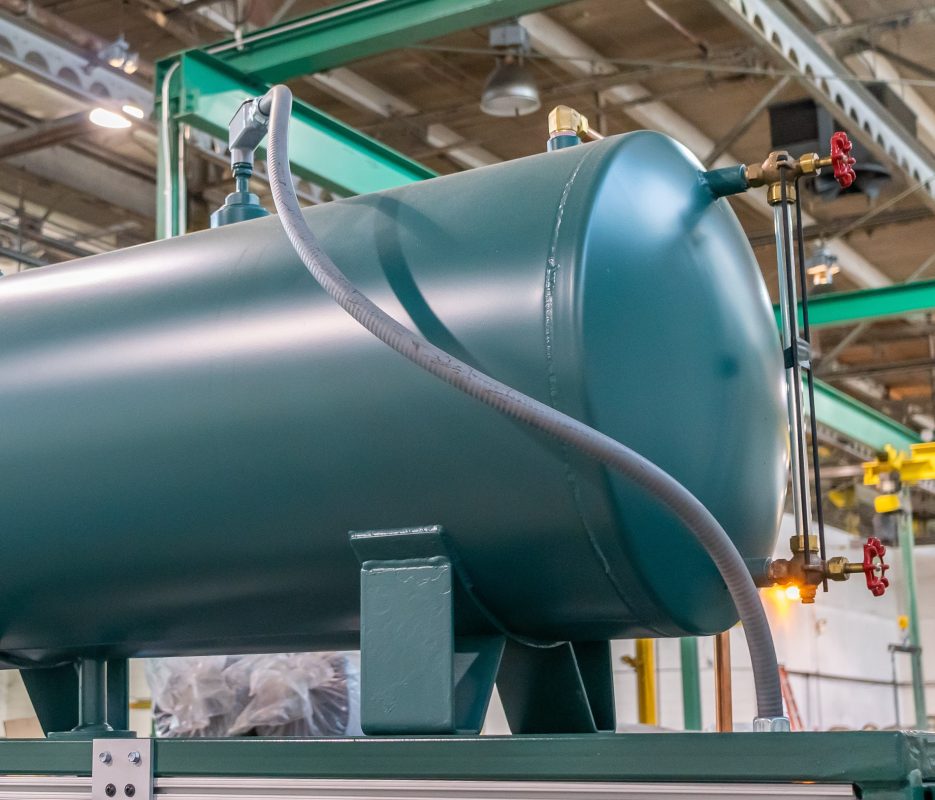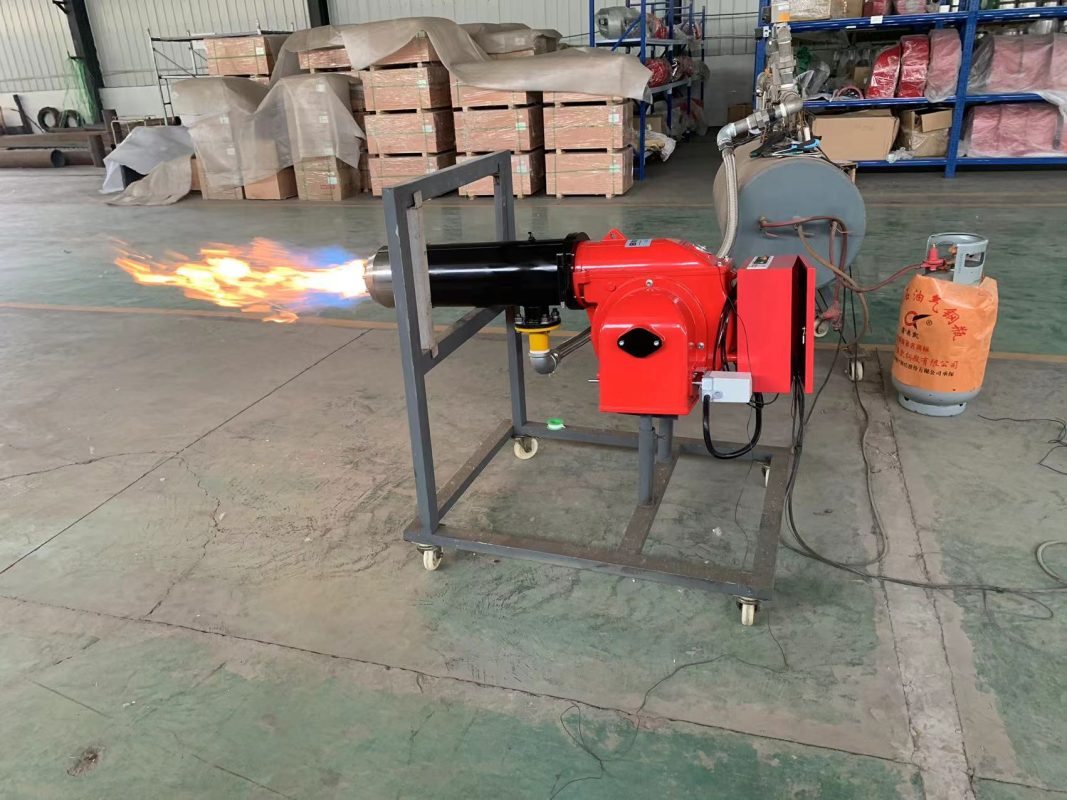Boiler interlocks are a crucial component in maintaining safety and operational efficiency in boiler systems. These systems act as protective mechanisms, preventing the boiler from starting or continuing operation when the required conditions are not met. Interlocks help control factors such as water level, pressure, and the operation of auxiliary equipment, ensuring that all components function in the correct sequence and adhere to technical standards.
This article provides a detailed analysis of various types of boiler interlocks, their functions, and their importance in preventing hazardous incidents.
1. What is a boiler interlock?
A boiler interlock is a safety protection system that prevents the boiler from starting or shutting down improperly when operational conditions are not met. This system ensures that combustion only occurs when all critical parameters are within safe limits.
It is important to note that a boiler interlock is not a single mechanical device but rather an integrated control system within an industrial boiler. It consists of electrical circuits, sensors, and controllers that ensure safe and sequential operation. Interlocks prevent the boiler from operating under unsafe conditions, such as low water levels, excessive pressure, or insufficient air supply. Without interlocks, the boiler may continue running under hazardous conditions, increasing the risk of serious incidents such as explosions, equipment failure, or fuel wastage.
In industrial boiler systems, interlocks play a key role in preventing severe issues such as backfire, overheating, boiler explosions, and damage to pressure equipment while optimizing operational efficiency.
Common Industrial Boiler Types:
- Circulating Fluidized Bed Combustion Boiler (CFBC)
- Atmospheric Fluidized Bed Combustion Boiler (AFBC)
- Waste Heat Recovery Boiler (WHRB)
- Heat Recovery Steam Generator (HRSG)
- Multifuel Gas Fired Boiler
Each type of boiler has specific interlock systems, but all adhere to common safety standards.
Key functions of boiler interlocks:
- Safety Interlock – Prevents the boiler from starting or continuing operation if unsafe conditions are detected, such as low water levels or excessive pressure.
- Operational Sequencing – Ensures components operate in the correct order, e.g., fuel is supplied only after the ignition system is stable.
- Emergency Shutdown – Automatically stops operation in case of severe incidents like high pressure, flame loss, or critically low water levels.
- Monitoring & Alarming – Continuously tracks operating conditions and triggers alerts when abnormal parameters are detected.
- Regulatory Compliance – Ensures adherence to safety standards such as ASME BPVC, NFPA 85, and ISO 16528, maintaining operational safety and legal compliance.
2. Water level interlocks
Water level in a boiler is one of the most critical factors to control, as it directly impacts operational efficiency, equipment durability, and system safety. The combustion process generates steam, and the water level must be maintained within a specific range to ensure stable heat transfer efficiency and prevent severe issues such as overheating, furnace tube burnout, or moisture carryover into the steam lines.
2.1. Low water level interlock
When the water level in the steam drum falls below the permissible limit, the heat exchange between water and the steam-generating surface diminishes, leading to overheating. Prolonged low water levels can cause steam-generating tubes to overheat and burn out, leading to metal deformation or even boiler explosion.
In response, the control system will automatically:
- Shut down the burner to prevent the tubes from being exposed to excessive heat without cooling water.
- Trigger an alarm to alert the operator to take corrective action.
- Activate emergency water feed (if an automatic feedwater system is in place) to restore safe water levels.
2.2. Low-Low water level interlock
If the water level continues to drop below the critical safety threshold, the entire system will undergo an emergency shutdown. This is the highest level of protection, preventing catastrophic damage to the boiler structure.
Actions taken when the Lo-Lo water level is reached:
- Immediate burner shutdown to eliminate the risk of tube burnout.
- Cut off the feedwater pump if system pressure is insufficient, preventing sudden cold water influx that could cause thermal shock and tube rupture.
- Activate an emergency alarm to prompt operators to investigate and resolve the water loss issue.
2.3. High water level interlock
Conversely, if the boiler water level exceeds the upper safety limit, it can lead to steam carryover, reducing steam quality and affecting the efficiency of steam turbines and other steam-powered equipment.
Risks associated with high water levels:
- Decreased heat exchange efficiency, as saturated water occupies the steam-generating space.
- Potential damage to steam-powered equipment, especially turbines, if wet steam is not effectively separated.
- Increased risk of water hammer, which can cause hydraulic shocks and damage steam piping.
When the Hi-Hi water level is reached, the interlock system will:
- Trigger an alarm to alert operators for immediate intervention.
- Adjust the automatic blowdown system to reduce water levels to a safe range.
- Temporarily halt feedwater supply in some cases to prevent excessive water from entering the steam lines.
- By integrating a boiler interlock system, operators can effectively manage water levels, ensuring safe and efficient boiler operation while minimizing the risks of thermal damage and equipment failure.

3. Furnace pressure interlocks
Furnace pressure directly impacts combustion stability and heat transfer efficiency. If pressure is too high or too low, the system will shut down for safety.
- High furnace pressure interlock – Stops the burner to prevent combustion chamber explosions or damage to heat transfer tubes.
- Low furnace pressure interlock – Prevents incomplete combustion and fuel accumulation, reducing the risk of unexpected ignition.
4. Air supply system interlocks
The air supply system consists of primary air fans (PA Fan), secondary air fans (SA Fan), and forced draft fans (FD Fan). These ensure sufficient oxygen supply for efficient combustion.
- PA/SA Fan High Pressure Interlock – Prevents excessive air supply imbalance, which can disturb combustion.
- FD Fan Failure Interlock – Stops operation if the forced draft fan fails, preventing inefficient combustion and unburned fuel accumulation.
5. Bed temperature & fuel level interlocks (for CFBC & AFBC Boilers)
In Circulating Fluidized Bed Combustion (CFBC) and Atmospheric Fluidized Bed Combustion (AFBC) boilers, bed temperature and fuel level must be strictly controlled to prevent overheating and fuel blockages.
- High Bed Temperature Interlock (CFBC) – Prevents refractory degradation due to excessive temperatures.
- High Bed Level Interlock (CFBC) – Avoids material flow blockages that can disrupt operations.
6. Fuel pressure & supply interlocks
Gas-fired and multi-fuel boilers require fuel pressure to be maintained within safe limits for optimal combustion and explosion prevention.
- Low Fuel Gas Pressure Interlock – Stops operation if fuel pressure is insufficient, preventing flame instability or sudden flameouts.
- High Fuel Gas Pressure Interlock – Prevents fuel line explosions or hazardous gas leaks.
- Fuel Valve Interlock – Ensures the main fuel valve follows proper opening sequences to prevent unburned fuel accumulation.
7. Ignition & Flame monitoring interlocks
The ignition and flame detection system ensures continuous and stable combustion.
- Ignition Failure Interlock – If no flame is detected within a set time, the burner stops and fuel flow is locked.
- Flame Failure Interlock – If the flame is unexpectedly extinguished, the fuel supply shuts off immediately to prevent explosions.

8. Difference between Interlock and Turbine Protection
In pressure equipment systems, particularly boiler and steam turbine systems, interlock and turbine protection are two essential concepts with distinct functions.
8.1. Interlock
An interlock is a set of mandatory conditions that must be met before a piece of equipment can start operating. If any of these conditions are not satisfied, the system will be prevented from running. For example, in a steam turbine system, a common interlock is the turning gear operation before turbine startup to prevent shaft bending due to uneven thermal expansion.
8.2. Turbine protection
Turbine protection refers to a monitoring and safety system that safeguards the turbine during operation. If a fault is detected, the protection system will automatically trip the turbine to prevent severe damage. Key turbine protection mechanisms include:
- Lubricating oil system monitoring
- Steam pressure and temperature control
- Cooling water flow regulation for the condenser
- Condenser vacuum level supervision
While the boiler interlock system ensures that critical startup conditions are met, the turbine protection system actively prevents operational failures, ensuring the safety and longevity of the turbine.
